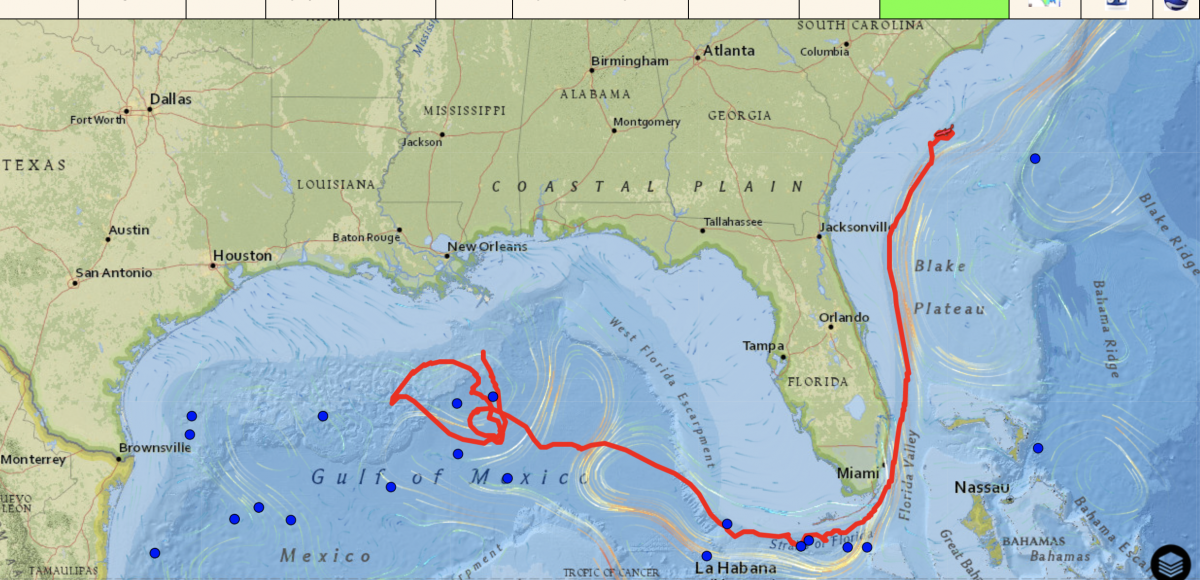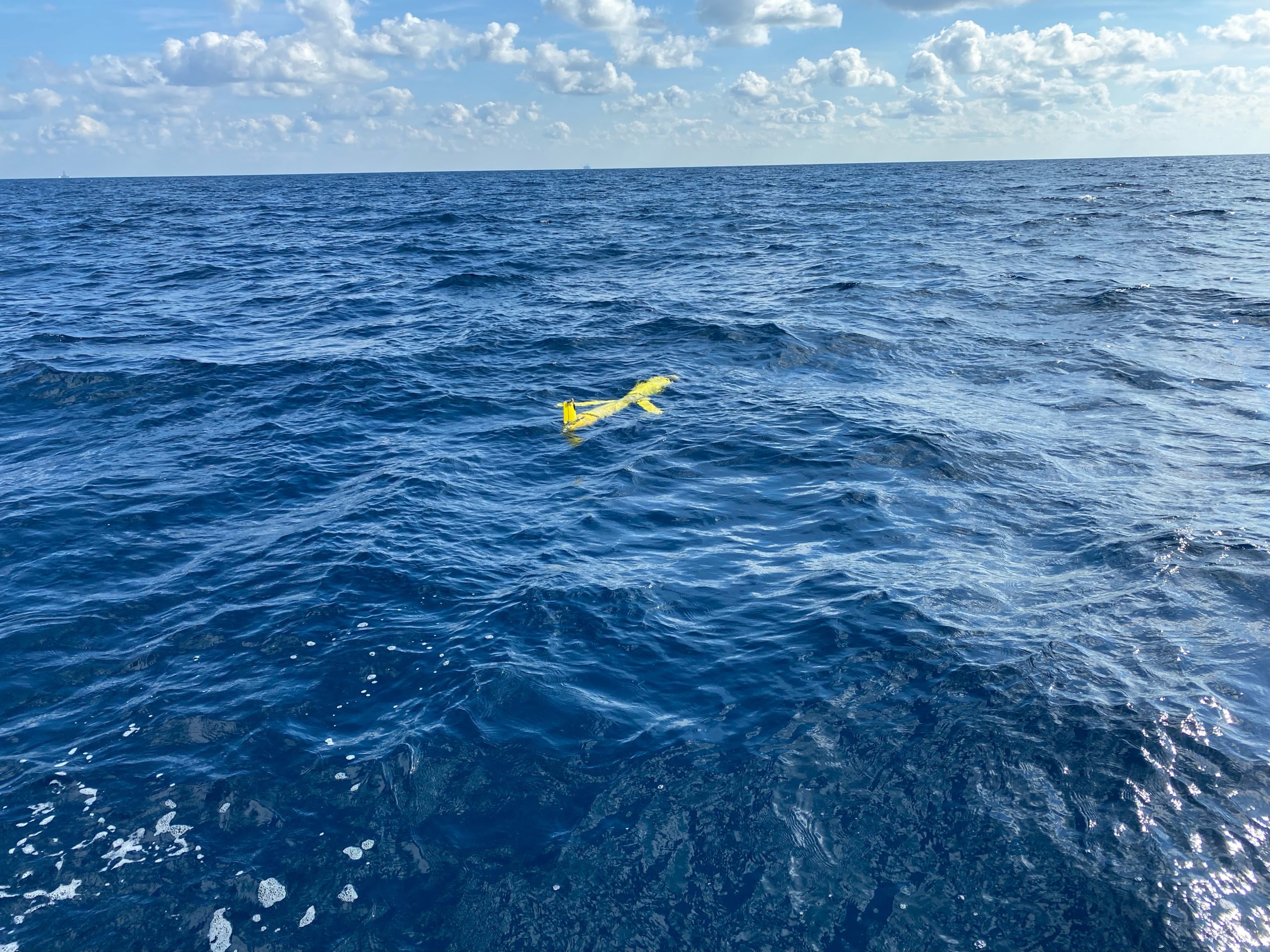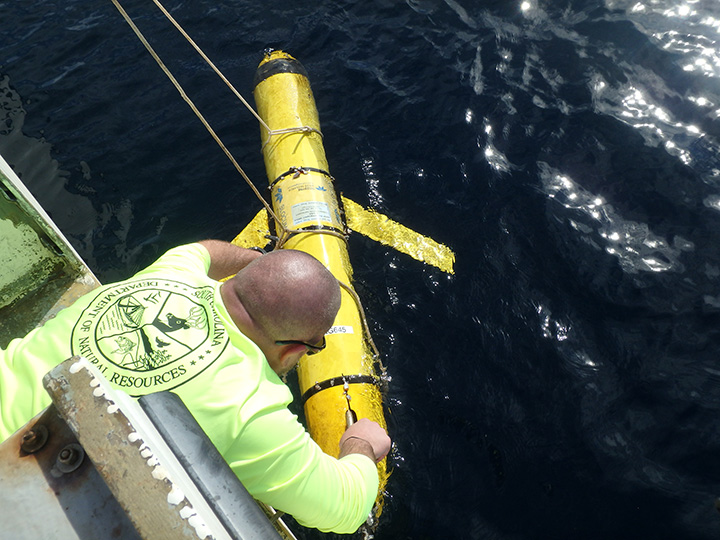When the Slocum glider known as NG645 was deployed about 80 miles south of New Orleans on Oct. 10, 2021, it became one of the most closely watched ocean-observing instruments in the Gulf of Mexico.
That’s because it was a small robot with a big mission: Investigate features of the Loop Current and Loop Current Eddies in the Gulf as part of the Hurricane Glider Project, then travel south into the Gulf Stream, go around the tip of Florida, through the Florida Straits and north to South Carolina — a trip of some 2,387 miles (3,842 km). The trip was a test to see whether the glider could navigate around Florida and up the East Coast successfully while gaining information about multiple marine systems — all during a single mission. And it would have to do so using minimal battery power and only buoyancy — no propeller or motor — to travel.


















